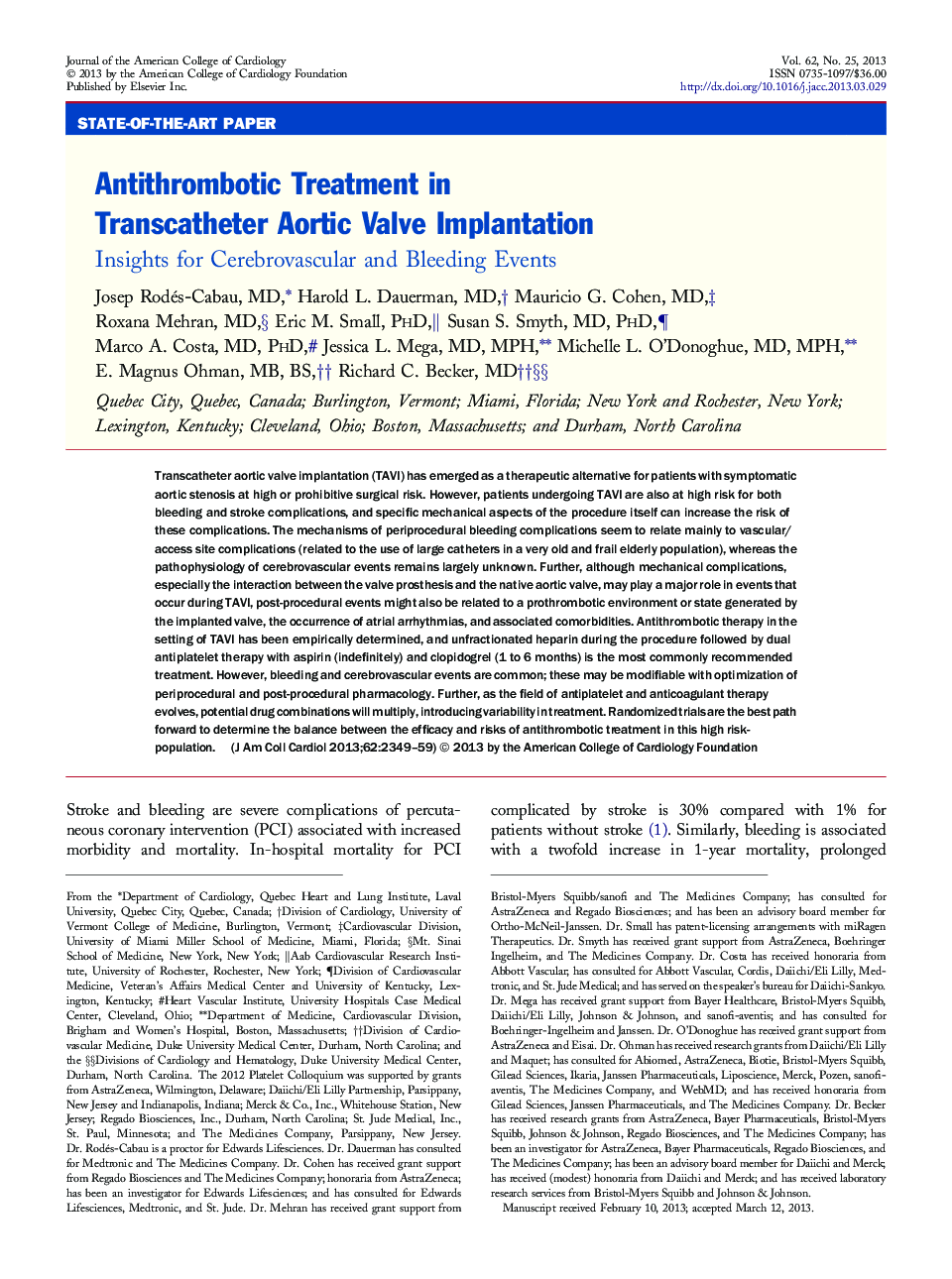| کد مقاله | کد نشریه | سال انتشار | مقاله انگلیسی | نسخه تمام متن |
|---|---|---|---|---|
| 5983000 | 1577124 | 2013 | 11 صفحه PDF | دانلود رایگان |

Transcatheter aortic valve implantation (TAVI) has emerged as a therapeutic alternative for patients with symptomatic aortic stenosis at high or prohibitive surgical risk. However, patients undergoing TAVI are also at high risk for both bleeding and stroke complications, and specific mechanical aspects of the procedure itself can increase the risk of these complications. The mechanisms of periprocedural bleeding complications seem to relate mainly to vascular/access site complications (related to the use of large catheters in a very old and frail elderly population), whereas the pathophysiology of cerebrovascular events remains largely unknown. Further, although mechanical complications, especially the interaction between the valve prosthesis and the native aortic valve, may play a major role in events that occur during TAVI, post-procedural events might also be related to a prothrombotic environment or state generated by the implanted valve, the occurrence of atrial arrhythmias, and associated comorbidities. Antithrombotic therapy in the setting of TAVI has been empirically determined, and unfractionated heparin during the procedure followed by dual antiplatelet therapy with aspirin (indefinitely) and clopidogrel (1 to 6Â months) is the most commonly recommended treatment. However, bleeding and cerebrovascular events are common; these may be modifiable with optimization of periprocedural and post-procedural pharmacology. Further, as the field of antiplatelet and anticoagulant therapy evolves, potential drug combinations will multiply, introducing variability in treatment. Randomized trials are the best path forward to determine the balance between the efficacy and risks of antithrombotic treatment in this high risk-population.
Journal: Journal of the American College of Cardiology - Volume 62, Issue 25, 24 December 2013, Pages 2349-2359